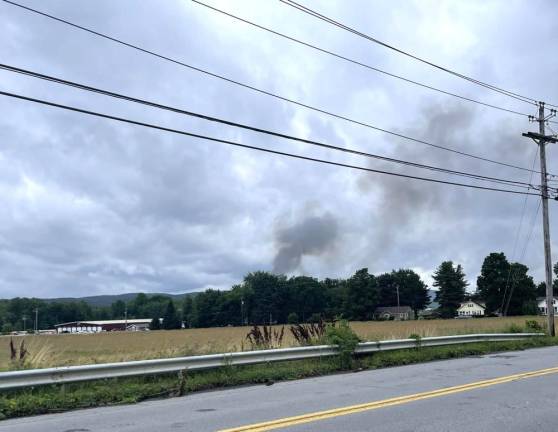Fire safety working group releases findings on battery fire contaminants
Warwick. State investigators found no evidence of significant off-site migration of contaminants associated with the Warwick fire.

Governor Kathy Hochul recently announced the findings of an investigation into the aftermath of the battery fire that occurred in Warwick earlier this year, as well as separate battery fires that took place in Jefferson and Suffolk counties.
According to the state’s Inter-Agency Fire Safety Working Group, on-site air monitoring from the Warwick sites found “no evidence of significant off-site migration of contaminants associated with the fires.” An independent third-party site inspection report came to that same conclusion after monitoring the air and taking surface samples at school buildings near the Warwick site.
“The Working Group has made significant progress in evaluating both preventive and reactive standards and practices for battery system fire safety, in addition to analyzing the impacts of the fires,” Hochul’s announcement stated. “Based on available analyses of air quality, soil, or water data collected in the days following the incidents, the Working Group concluded that there were no reported injuries and no harmful levels of toxins detected.”
However, given the state’s push for renewable energy sources, which will require an increase in battery usage, the state plans to issue statewide battery system project assessments and fire code reviews, with draft recommendations expected to be released for public comment in the first quarter of 2024.
“New York State is grateful to the first responders who were on the scene at these fires, and we are taking this opportunity to ensure they can continue to do their jobs safely and effectively,” Governor Hochul said. “As we continue to advance New York’s clean energy transition, maintaining this safety is of the utmost importance. Thankfully, the Working Group’s analysis shows no notable lasting impacts on the health or safety of the first responders or the communities they serve.”
The Working Group included representatives from the Division of Homeland Security and Emergency Services (DHSES), Office of Fire Prevention and Control (OFPC), New York State Energy Research and Development Authority (NYSERDA), New York State Department of Environmental Conservation (DEC), Department of Public Service (DPS), and the Department of State (DOS).
The Working Group is currently in the process of inspecting all operational battery systems above 300kW in New York, which it says accounts for the majority of commercial battery systems in service today. Inspections are expected to be completed by the second quarter of 2024. The group is also in the process of negotiating with the manufacturers of these batteries and utility companies to gain “root cause analysis reports” for each of the battery fire sites. Once they are released, experts will analyze the findings.
On June 26, a lithium-ion battery storage facility on Route 1A in Warwick run by Convergent Energy and Power caught fire and burned for multiple days. At the time, Convergent blamed the Powin Centipede battery storage system that was in use. In October, Convergent Energy Chief Operating and Financial Officer Frank Genova further stated that a manufacturing defect allowed for water to seep into the battery containers, resulting in an electrical short that caused the fire. The incident inspired the Warwick Village Board of Trustees to issue a one-year moratorium on land use approvals for development of public utility facilities involving energy storage systems.